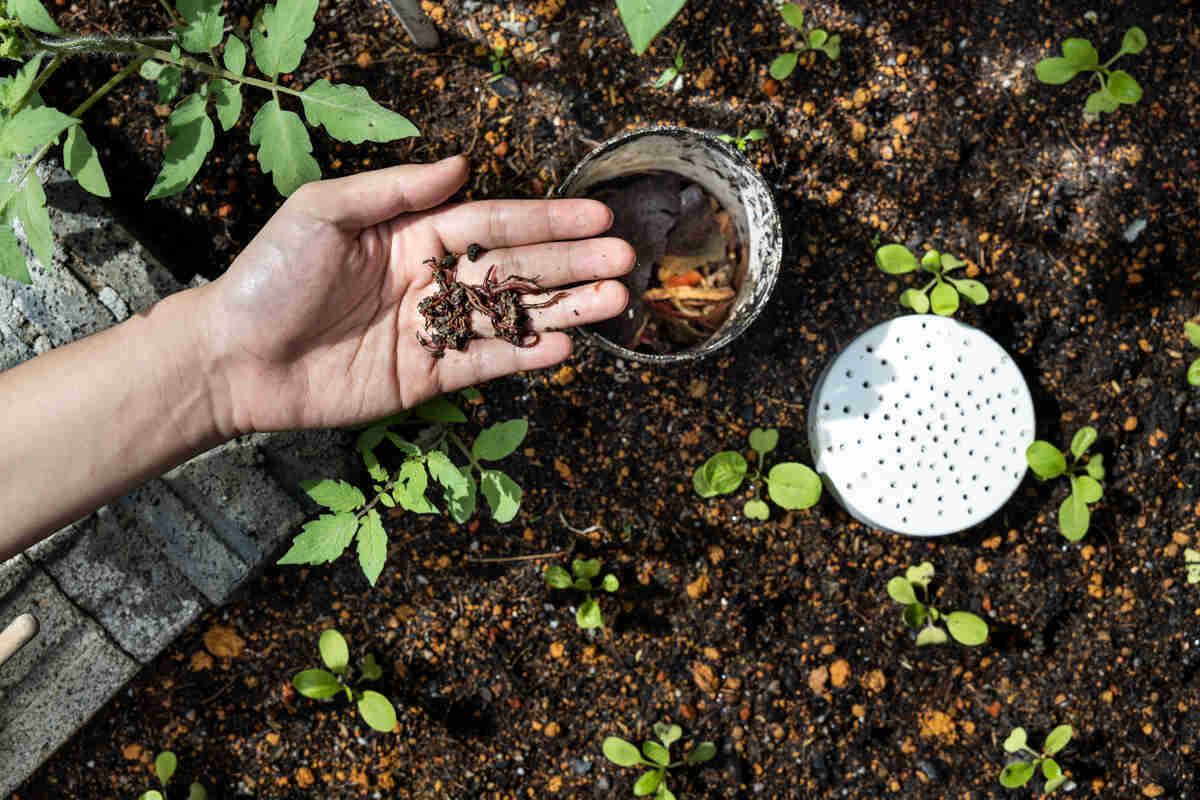Mastering Red Wiggler Composting: Crucial Practices for Healthy And Balanced Composting
Wiki Article
Understanding the Benefits of Red Wiggler Composting: Exactly How This Effective Approach Changes Organic Waste Into Nutrient-Rich Dirt Modifications
Red Wiggler composting, utilizing the varieties Eisenia fetida, provides a compelling approach to natural waste monitoring, transforming kitchen scraps and yard particles into important dirt amendments. This method not only enhances dirt fertility but also addresses pressing ecological issues, consisting of land fill waste reduction and greenhouse gas emissions.What Are Red Wigglers?
Red wigglers, scientifically referred to as Eisenia fetida, are a species of earthworm that play a crucial duty in vermicomposting systems. These worms are identified by their reddish-brown color, segmented bodies, and an unique capability to flourish in organic-rich atmospheres, making them ideal for composting applications - Red Wiggler Composting. Unlike their garden-dwelling equivalents, red wigglers like to inhabit the top layers of dirt, where rotting issue is plentifulUsually gauging between 3 to 4 inches in length, red wigglers have a high reproductive rate, enabling them to multiply swiftly under optimum problems. They have an unique digestive system that allows them to process organic waste efficiently, converting it right into nutrient-rich spreadings, which are highly useful for plant growth.
Their tolerance to varying moisture degrees and temperature ranges even more boosts their utility in vermicomposting configurations, making them a popular option amongst composting enthusiasts. In addition, red wigglers are cardiovascular organisms, which demands a well-aerated composting environment, guaranteeing efficient disintegration. Understanding the biological qualities and actions of red wigglers is crucial for enhancing their use in sustainable waste administration techniques.

Advantages of Vermicomposting
Taking advantage of the power of vermicomposting offers a wide range of farming and environmental advantages. To start with, it considerably reduces natural waste in landfills, consequently reducing methane emissions, a potent greenhouse gas. By drawing away food scraps and yard waste to vermicomposting, we sustain a more sustainable waste management system.Additionally, vermicomposting boosts soil health and wellness. The castings produced by red wigglers are abundant in crucial nutrients, microbes, and enzymes, enhancing soil structure and fertility. This nutrient-rich change advertises robust plant growth and increases water retention, minimizing the requirement for chemical plant foods.
Additionally, vermicomposting fosters biodiversity in the soil environment. The introduction of beneficial microbes from worm spreadings help in disease reductions and nutrient cycling, producing a much healthier environment for plants.
Financially, vermicomposting lowers the prices connected with chemical inputs and waste disposal. Gardeners and farmers can grow top notch fruit and vegetables at reduced expenditures, adding to food safety and security and sustainability.
How to Begin Composting
Starting a composting venture can be a uncomplicated and gratifying process. This will certainly aid preserve a well balanced temperature level, important for the composting procedure.Collect organic products such as kitchen area scraps, backyard waste, and shredded paper. Goal for a balanced mix of 'environment-friendly' materials, high in nitrogen (e.g., fruit scraps, coffee premises), and 'brown' products, rich in carbon (e.g., dried leaves, cardboard) A proportion of roughly 2:1 green to brownish products is ideal.
Beginning layering your materials, making sure ample air blood circulation by transforming the stack regularly. This promotes aerobic decomposition, speeding up and lowering smells up the process. Display wetness degrees; the compost should feel like a moist sponge but not excessively damp.
Nutrient Account of Vermicompost
Composting, specifically with red wigglers, produces a nutrient-rich item referred to as vermicompost. This natural amendment is identified by its high focus of necessary nutrients, making it a very useful resource for horticulture and agriculture. Vermicompost usually includes elevated levels of macronutrients such as nitrogen, potassium, and phosphorus, which are essential for plant development. In addition, it offers trace elements like magnesium, iron, and calcium, cultivating durable go to the website plant advancement and improving dirt health.The microbial task existing in vermicompost additionally enhances its profile, introducing valuable microorganisms and fungi that advertise nutrient schedule and uptake in plants. This biological component aids in reducing plant illness and enhancing dirt structure, resulting in improved water retention and oygenation.

Ecological Influence of Composting
The ecological influence of composting, particularly with the usage of red wigglers, is multifaceted and profound. This approach dramatically lowers the volume of natural waste sent to landfills, which in turn decreases greenhouse gas exhausts, particularly methane-- a potent contributor to climate change. By drawing away natural materials from land fills, red wiggler composting not only assists reduce environmental deterioration but likewise advertises sustainable waste administration techniques.
In addition, composting adds to carbon sequestration, as the process records carbon dioxide from the atmosphere and shops it in the dirt. This natural process aids in combating climate adjustment while enriching the soil - Red Wiggler Composting. On the whole, red wiggler composting provides a viable, environment-friendly remedy for waste administration and ecological sustainability, advertising much healthier communities and a much more lasting future
Conclusion
In verdict, Red Wiggler composting serves as an efficient approach for transforming natural waste right into beneficial soil modifications. The process not only improves soil fertility and structure however also reduces ecological concerns linked with waste disposal.Red Wiggler composting, utilizing the species Eisenia fetida, offers a compelling approach to natural waste management, transforming kitchen area scraps and yard debris right into click here to find out more important soil modifications. Unlike their garden-dwelling equivalents, red wigglers favor to inhabit the upper layers of dirt, where rotting issue is plentiful.
The castings produced by red wigglers are rich in necessary nutrients, germs, and enzymes, boosting dirt framework and fertility. The nutrient-rich byproducts of red wiggler activity boost soil structure, boost water retention, and advertise biodiversity within the soil ecosystem.In conclusion, Red Wiggler composting offers as an effective method for converting organic waste into beneficial dirt amendments.
Report this wiki page